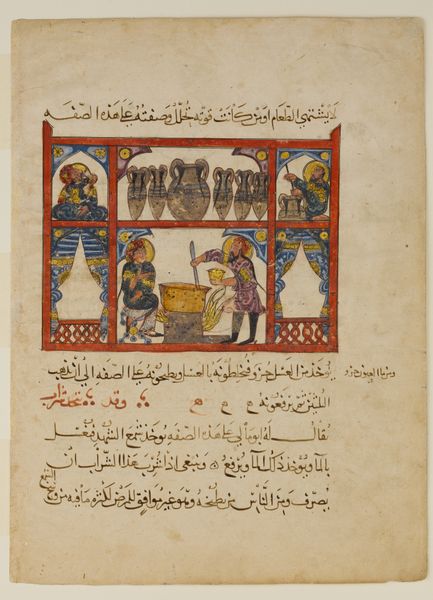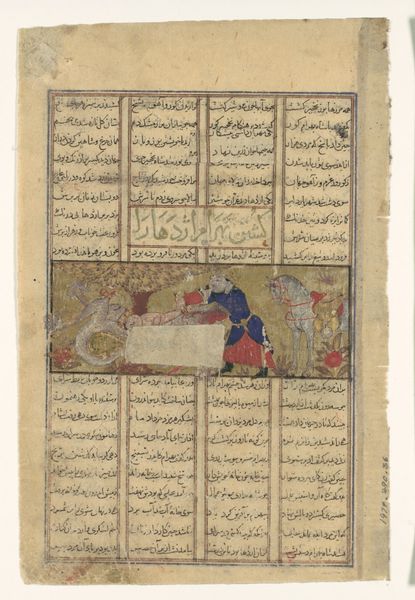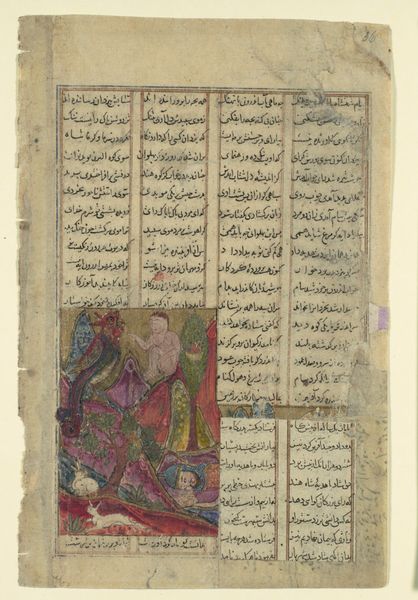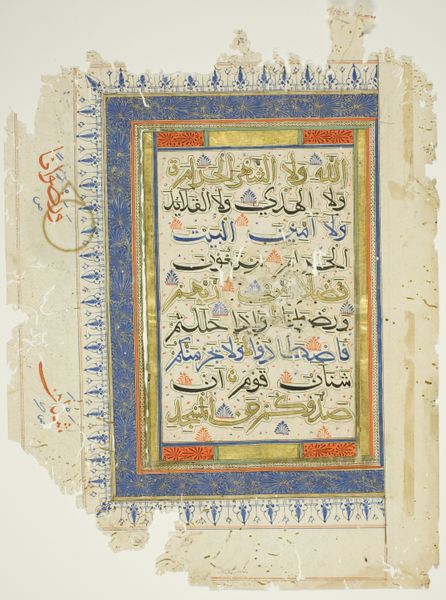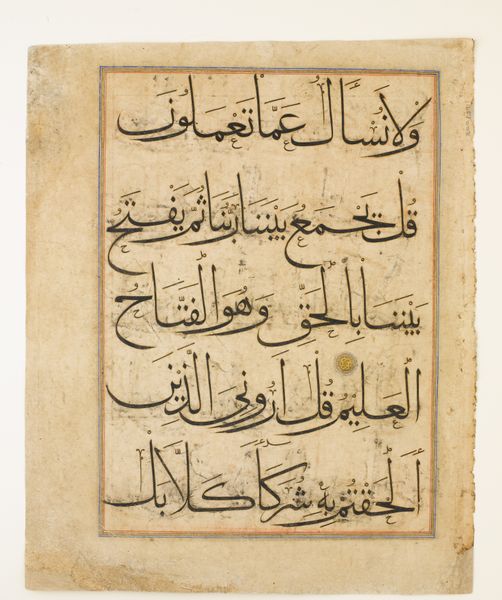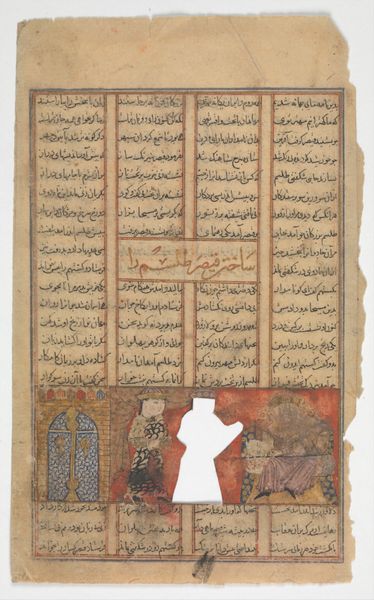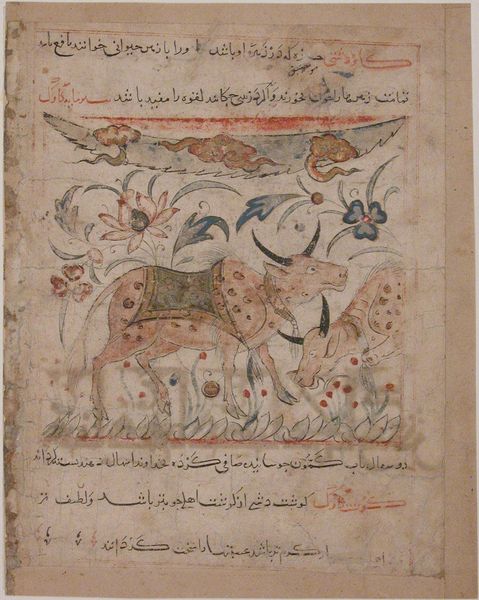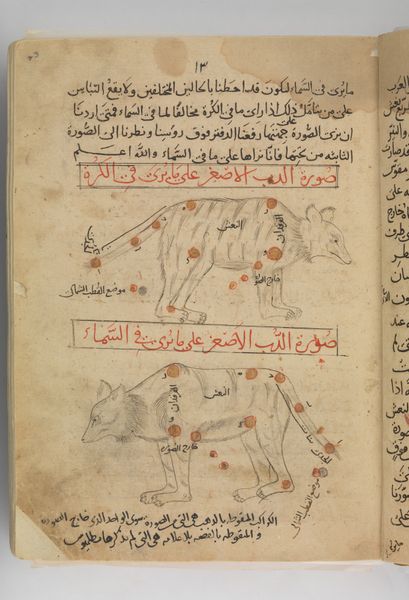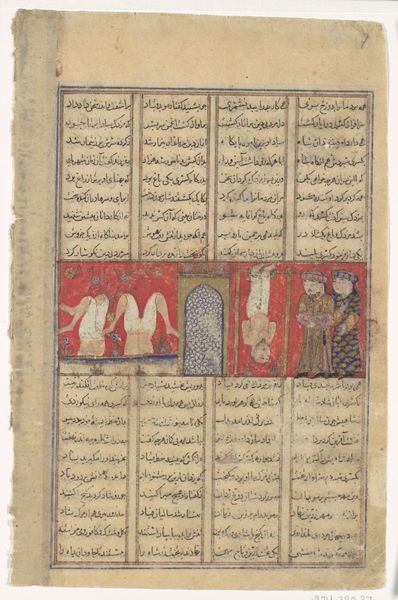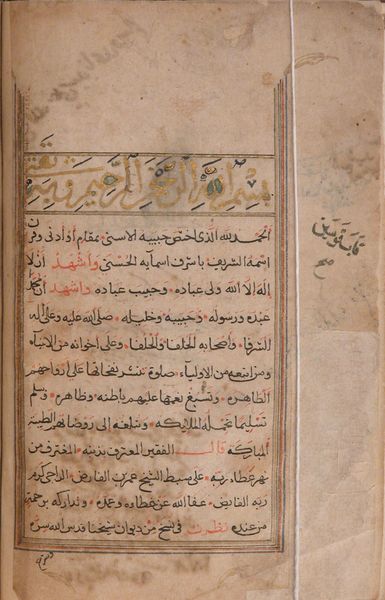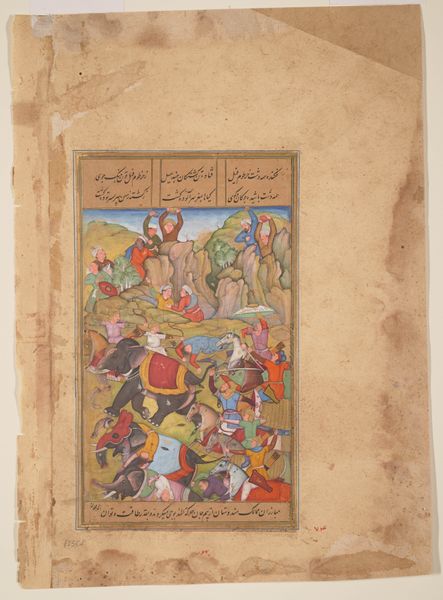
drawing, paper, ink
#
drawing
#
medieval
#
figuration
#
paper
#
ink
#
islamic-art
Dimensions: 28.9 x 21.3 cm
Copyright: Public domain
Curator: What a peculiar design! This ink drawing on paper from 1206 by Al-Jazari depicts a clock in the form of an elephant with an Indian driver. It’s a captivating combination of elements. Editor: My first thought is…how heavy is that contraption? Visually, it feels weighted down, even chaotic. Is that tension intentional, do you think? Curator: Given Al-Jazari's meticulousness, absolutely. It's less about chaos and more about demonstrating the complexity of material interaction, especially when we consider this not as a mere drawing but a design for a functional object. Imagine the labor involved in constructing such a clock! Editor: Which, of course, opens it up to all sorts of readings. A mechanized elephant driven by a figure racialized as Indian. There’s power, certainly, but also questions of exploitation and exoticism inherent in its design and how this clock reflects hierarchies. What was the intended audience, and how might they have received this image? Curator: It would be intended for courtly display, showcasing both the artistic and technical skills present, as well as available materials and labor power. We see similar automation concepts reproduced later, indicating the lasting influence of his engineering prowess within court workshops. Editor: So it is a celebration of technology and power. But technology rarely exists in a vacuum. I can’t help but think about the driver’s representation in this drawing; his pose is passive in the composition despite holding a spear. His dark skin also stands out against the white robe and red halo above his head. His representation echoes the era’s problematic social and political hierarchies that cast people of color into subservient roles. Curator: That is an important observation. It speaks to how technological innovation intersects with prevailing cultural norms. And to the integration of diverse knowledge—Al-Jazari, while working within an Islamic context, drew inspiration from Greek and Indian engineering traditions, highlighting the exchange and synthesis of craft knowledge that informed his work. Editor: Absolutely, and by looking at Al-Jazari’s place within a history of representation we are given another insight into that time, not just through aesthetic appreciation, but also historical investigation. Curator: A complex clock and complex legacy—I'll certainly look at similar works from a new perspective. Editor: Agreed! Now, onward to challenge more assumptions!
Comments
No comments
Be the first to comment and join the conversation on the ultimate creative platform.
